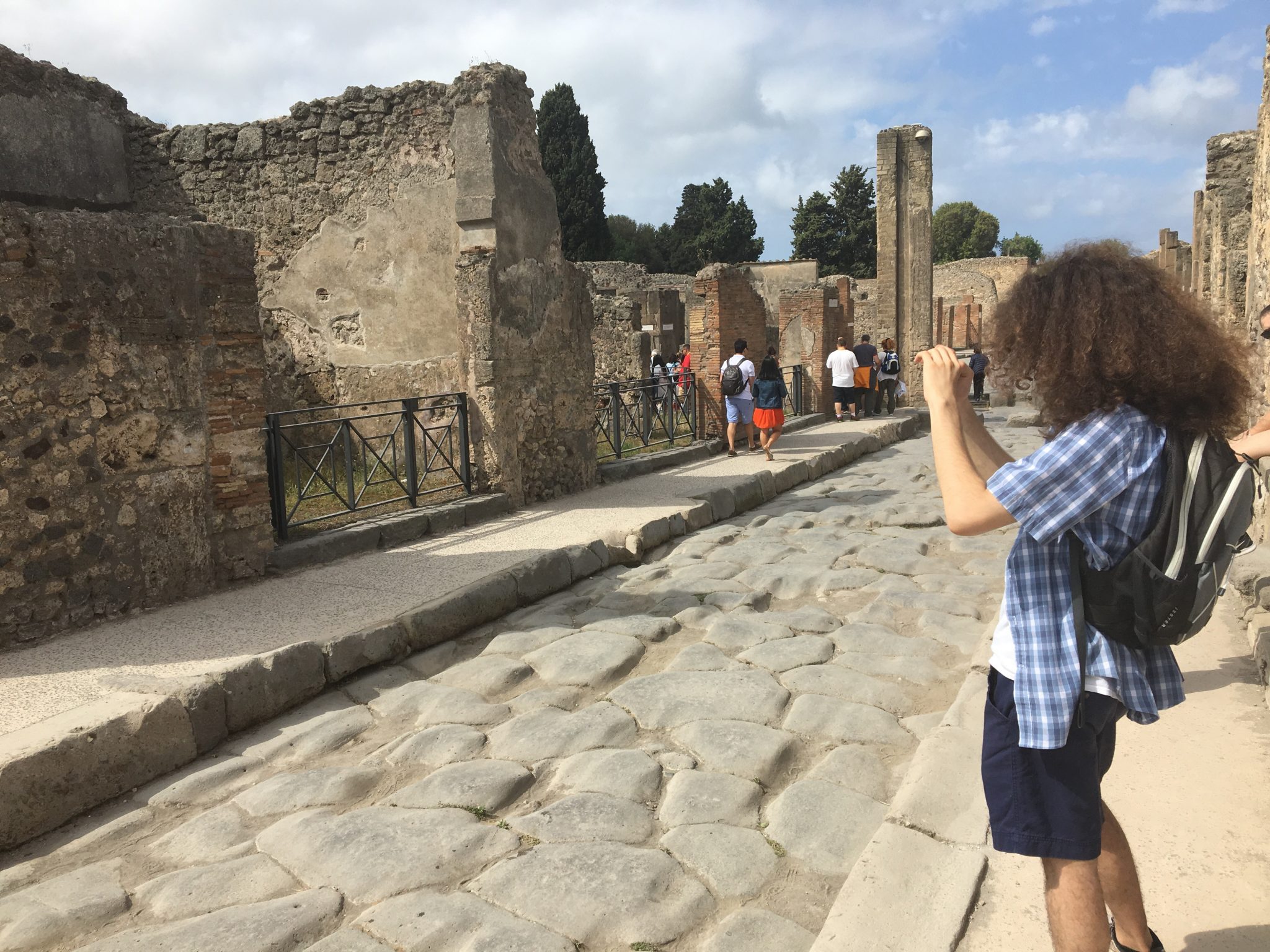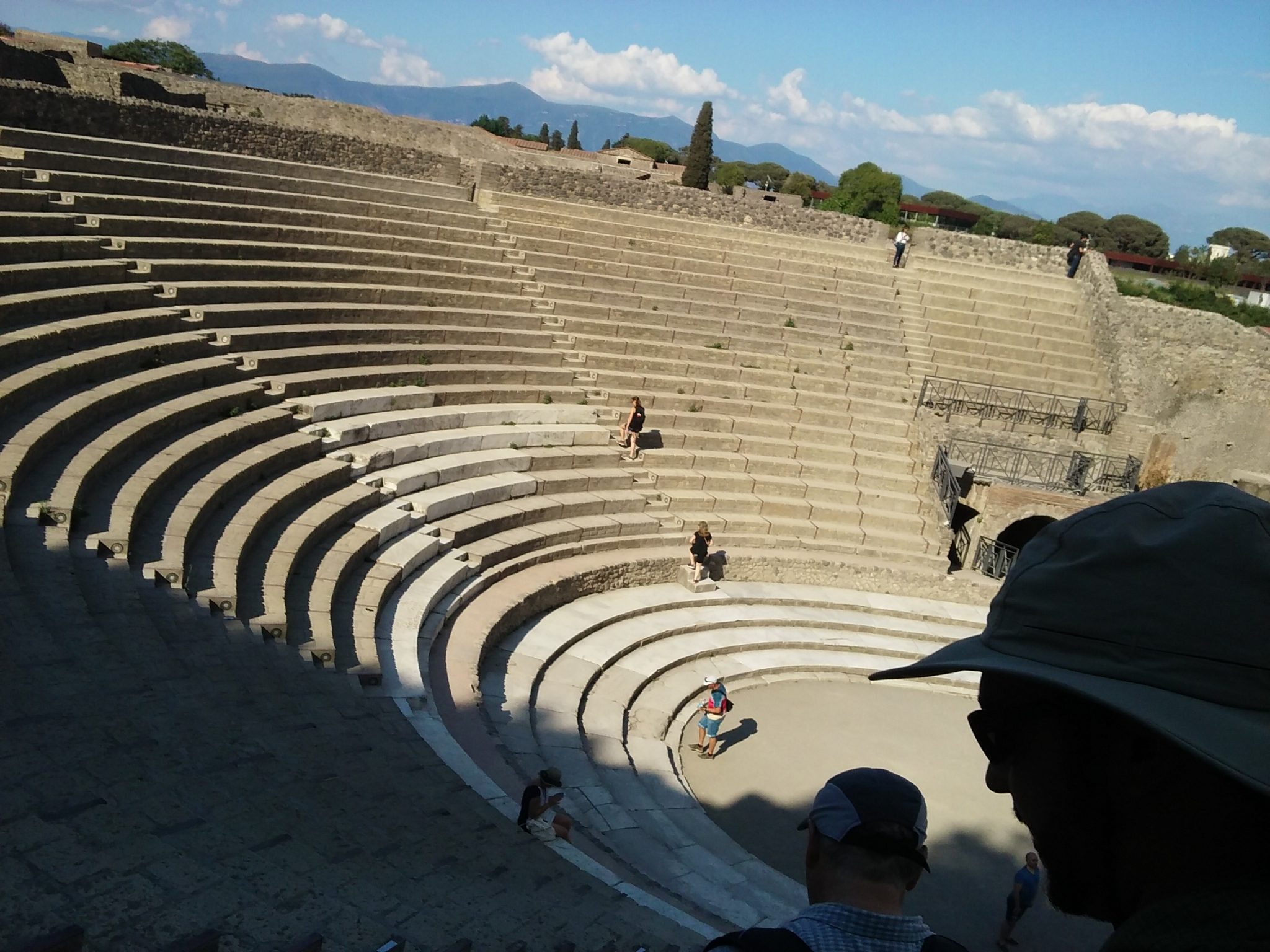Austin Kreulach, a rising computer science junior, recently spent two weeks of his summer in southern Italy with a program led by Dr. Dave Fredrick and Dr. Rhodora Vennarucci. Throughout his time, Austin learned how to map, how to pack, and most importantly how to eat!
Two weeks of southern Italy, where to begin? The heart of the experience was the lectures in the ruins. We walked an average of twelve miles a day through dusty, sunbaked ancient history, while our professors covered a combination of abstract urban analysis and a potpourri of Roman life. At first it felt like a more in-depth version of a normal tour of Pompeii, but as the program went on the tone shifted from covering a huge swath of the city to the virtual reality aspect. We learned how to use photogrammetry software to create 3D models from any given physical object by taking a mountain of pictures. This was the point where the program went from enriching my understanding of both ancient and modern Italy to giving me directly applicable skills for future projects.

Taking pictures of the ancient city.
The food was an adventure. One evening we went to a seafood restaurant, where a friend of mine ordered fedelini and I had capellini. Neither of us had any idea what those names meant, but eating at random in Italy rarely fails. When the food arrived, the dishes looked so similar we had to ask the waiter if he made a mistake. After a bit of working through the language barrier, he brought out the packages. I still couldn’t tell, but my friend assures me one is thinner. If France has two hundred cheeses, Italy must have a thousand pastas.
One thing that surprised me more than I expected was the lack of stereotypical Italian things. Terrible of me, I know, but when you go to Italy and find out that alfredo is a man’s name, not a sauce, it’s a bit of a shock. The most “Italian” episode of the program was our last evening in Pompeii. We had just left the hotel determined to go find a good pizza restaurant when a thin Italian boy, about fifteen years old, rolls onto the sidewalk ahead of us on a moped, says “Pizza?” and drops a few fliers into our hands. He drove off immediately. We followed the directions and had some incredibly cheap and excellent food. The big man himself came out of the kitchen near the end of the meal and, in his English and our Italian, had a short, broken conversation about the boy and the food. It was one of the most memorable parts of the experience and it’s a shame we left Pompeii for good the next morning.
The closest thing to a regret I have about the program is how I packed. I’m really glad I packed light (only about five outfits) but I still have a list of things I should have had.
Easily topping the list is an umbrella. It only rained once but that’s all you need to ruin a pair of shoes. Just under that is a clothesline. It was a lot of fun doing laundry in a bidet, but having most of our hotel room covered in soggy socks was a bit unsightly and without the Italian sun clothes took ages to dry. Hindsight makes this one more shameful than it felt at the time, but I didn’t have an Italian language dictionary. One of the perks of a faculty-led program is the easy access to people who know what they’re doing, so not having a dictionary wasn’t as bad as it could have been. The times I was out with just another student I definitely felt the absence. Other than those, clothing and a notebook covered most needs.

Pompeiian Theater.
One of the things I missed the most while I was in Italy was potatoes. I know I’ve spent most of this blog talking about food, but I think Italy has given me a lot to digest. Sicilian crocche saved me with the occasional deep-fried potato ball, but America spoiled me with an overabundance of spud. Pasta is great but the second I’m back in the states I’m having a massive baked potato.

